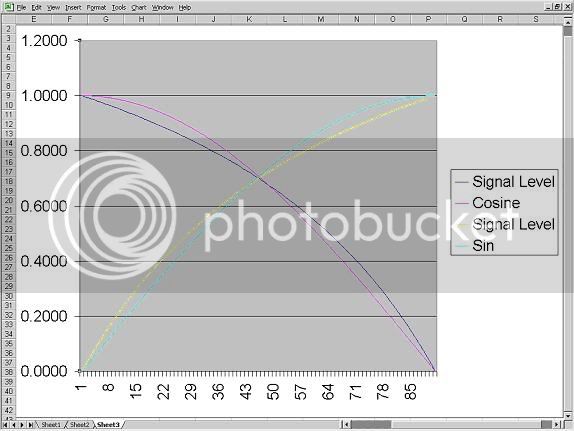SSLtech
Well-known member
I'm trying to get as close as I can to a sin/cosine curve for a 'crossfade' circuit... I'm currently experimenting with a "panpot" type circuit (constant load impedance is not a big issue) and the circuit is thus:
Two feeds in via two equal "input" resistors (currently 15kΩ) these meet the two ends of a 10K linear pot, with the wiper grounded. The signal then leaves from the two ends of the pot via two "output" resistors (currently 15kΩ) to a virtual-ground summing circuit, which is gain-set to correct for the insertion loss of the circuit.
I've written an excel spreadsheet which plots the attenuation for each circuit and also compares them to a true sin/cosine plot (sin/cos gives equal power for non-correlated signals, and a -3dB at center for each signal...)
So far these numbers generate close enough to -3dB at center, but I'm wondering if there are any other circuits which will get closer to true sin/cos curves, without breaking the bank...
Thanks in advance,
Keith A.
Two feeds in via two equal "input" resistors (currently 15kΩ) these meet the two ends of a 10K linear pot, with the wiper grounded. The signal then leaves from the two ends of the pot via two "output" resistors (currently 15kΩ) to a virtual-ground summing circuit, which is gain-set to correct for the insertion loss of the circuit.
I've written an excel spreadsheet which plots the attenuation for each circuit and also compares them to a true sin/cosine plot (sin/cos gives equal power for non-correlated signals, and a -3dB at center for each signal...)
So far these numbers generate close enough to -3dB at center, but I'm wondering if there are any other circuits which will get closer to true sin/cos curves, without breaking the bank...
Thanks in advance,
Keith A.



